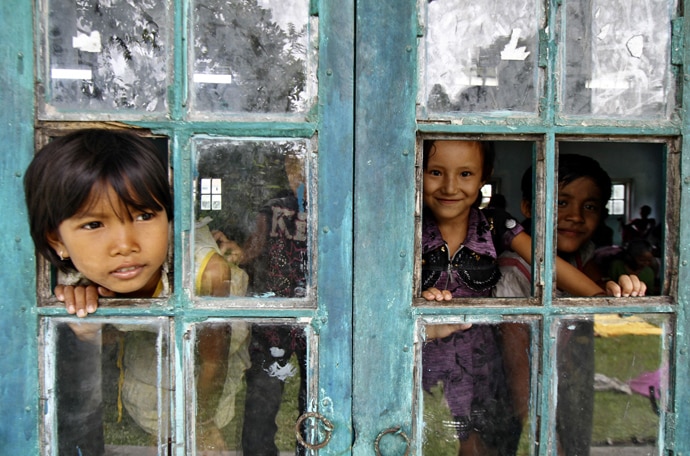Who's saving the children? Will child rights ever be a focus for our politicians?

India has the world’s largest adolescent population of 250 million - and 39 per cent of its population comprises children. And children do not have the right to vote.
With election campaigns reportedly already underway, all the political parties are working hard to identify different groups of voters to target across the country. But millions among us, especially children, will be at the bottom of their priority list as they make their pitch to the electorate.
This is a terrible mistake for it lets down the most vulnerable and important group in our society.
The future of this country.
Its children.
So, how do we ensure that India’s most significant population is kept high on the political agenda? Politicians need to make children’s goals their political own to ensure that India lives up to its promises for the generation of today and tomorrow.
Children are too young to understand politics and to influence politicians during elections with their grievances - but their concerns are as significant as other sections of society. Politicians need to speak up for the rights of children - and for them, as custodians of their rights. Because much still remains to be done to improve the state of children, if they are to be assets of India. The statistics tell their own sorry tale:
1.) There were 1.08 million under-five deaths in India in 2015 alone.
2.) 45,000 women die every year due to pregnancy and childbirth-related issues.
3.) 6,30,000 is the number of neonatal deaths.
4.) Full immunisation is still at 62 per cent.
5.) 37 per cent women from the poorest families were married before they turned 18.
6.) There are 10.1 million child workers aged 5-14 years.
The Constitution of India mandates that “children are given opportunities and facilities to develop in a healthy manner and in conditions of freedom and dignity and that childhood and youth are protected against exploitation and against moral and material abandonment” (Article 39(f) of the Constitution).
Thus, they deserve the best in national investment.
As a signatory to the UN Convention of the Rights of Child and as responsible citizens and policy makers, our children should be given their rights - and what better time than the manifestos of the upcoming general election?

Development of children is critical in achieving the desired Sustainable Development Goals (SDGs) for India and for achieving the government of India’s 2020 vision. While India has made great strides in terms of child development over the years, there are still many steps to be taken to improve the present condition across sectors.
The government has been working towards ensuring the survival of the girl child through Beti Bachao Beti Badhao, development, participation and protection of children and the agenda for achieving its aims are set down in the National Plan of Action for Children (NPAC), 2016 which lays down a recommended budgetary allocation for children.
Yet, India currently falls short of the recommended 5 per cent and needs to improve allocations in order to meet necessary targets.
Presently, there are only incremental increases in allocations, while an exponential increase is needed to create greater impact.
All political parties and governments in power should focus on the issues impacting our youngest citizens, such as:
1.) Increased expenditure on education and health.
2.) Better access in schools for the disabled with brail textbooks and audiobooks.
3.) Increased budgets for children. This year, this was reduced from 3.32% in 2017 to 3.24% in 2018.
4.) Ensuring a safe environment for all girls and boys to grow up in by making child-friendly constituencies and states mandatory.
5.) Making sanitary dispensing pads mandatory in government schools and make sanitation sustainable.
Will we see these issues being taken up?
While some enjoy the progress made in development, there are many marginalised children left far behind. It is important to provide equitable access to all the services being provided by the government so that no child is left out. They are not tomorrow’s citizens but today’s. A manifesto is a reminder of what needs to be done for our children, a reminder at the highest levels of power in our country that tomorrow, in truth, belongs to the kids.

